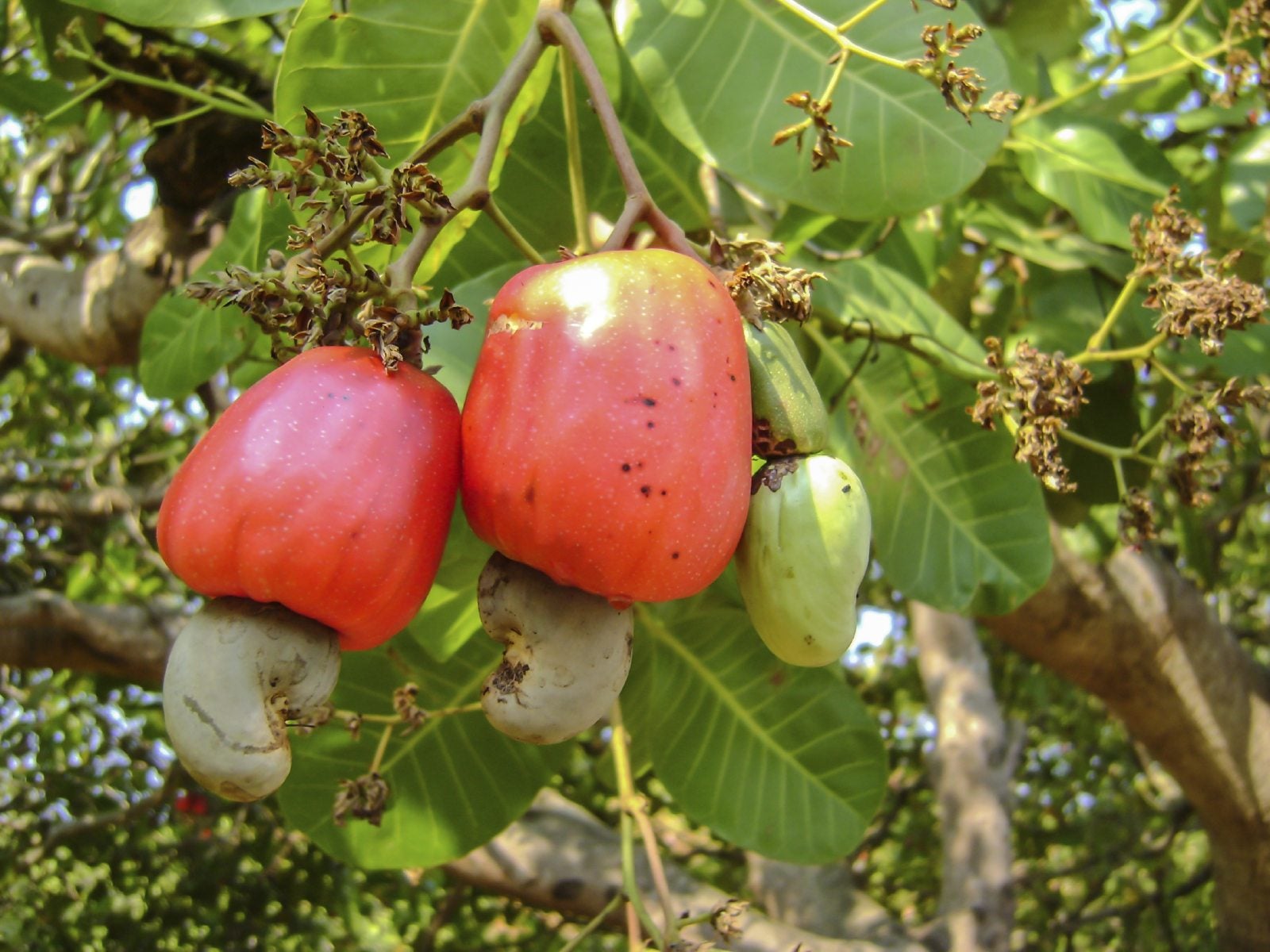Cashew Harvesting: Learn When And How To Harvest Cashews


As nuts go, cashews are pretty strange. Growing in the tropics, cashew trees flower and fruit in the winter or dry season, producing a nut that’s much more than a nut and has to be handled with care. Keep reading to learn how to harvest cashews.
About Cashew Harvesting
When cashew nuts form, they appear growing out of the bottom of a big swollen fruit. The fruit, called a cashew apple, isn’t really a fruit at all, but is actually the swollen end of the stem just above the cashew nut. Each apple is paired with a single nut, and the visual effect is pretty bizarre. The apples and nuts will form in the winter or dry season. Cashew harvesting can take place about two months after the fruit has set, when the apple takes on a pink or red cast and the nut turns gray. Alternatively, you can wait until the fruit falls to the ground, when you know it’s ripe. After harvesting, twist the nuts off of the apples by hand. Set the nuts aside-- you can store them in a cool, dry place for up to two years. The apples are juicy and tasty and can be eaten immediately.
How to Harvest Cashews Safely
After harvesting cashew nuts, you may want to store them up until you have a decent number, because processing them is a bit of an ordeal. The edible meat of the cashew is surrounded by a shell and a very dangerous, caustic liquid related to poison ivy. USE CAUTION WHEN PROCESSING YOUR CASHEWS. Wear long sleeved clothing, gloves, and goggles to keep the liquid from getting on your skin or in your eyes. Never crack open an unprocessed nut. To process the nuts, roast them OUTSIDE (never inside, where the fumes can build up and be breathed in). Place the nuts in an old or disposable pan (now your designated cashew pan, as it may never get fully clean of the dangerous cashew oils). Either cover the pan with a lid or fill the pan with sand until the nuts are covered-- the nuts will spit liquid as they heat up, and you want something to catch or absorb it. Roast the nuts at 350 to 400 degrees F. (230-260 C.) for 10 to 20 minutes. After roasting, wash the nuts with soap and water (Wear gloves!) to remove any residual oil. Crack the nut open to reveal the meat inside. Roast the meat in coconut oil for five minutes before eating.
Gardening tips, videos, info and more delivered right to your inbox!
Sign up for the Gardening Know How newsletter today and receive a free copy of our e-book "How to Grow Delicious Tomatoes".

The only child of a horticulturist and an English teacher, Liz Baessler was destined to become a gardening editor. She has been with Gardening Know how since 2015, and a Senior Editor since 2020. She holds a BA in English from Brandeis University and an MA in English from the University of Geneva, Switzerland. After years of gardening in containers and community garden plots, she finally has a backyard of her own, which she is systematically filling with vegetables and flowers.
-
 Looking For Plants To Give You The Soft And Fuzzies? Try These 5 Fuzzy Leaf Plant Options
Looking For Plants To Give You The Soft And Fuzzies? Try These 5 Fuzzy Leaf Plant OptionsLovers of texture, drama, silver foliage and tactile plants will adore these special sensory garden additions. These fuzzy leaf plant options will leave you all aglow
By Susan Albert
-
 Get Ready For A Summer Of Hummers! Grow These Full Sun Hummingbird Plants and Flowers
Get Ready For A Summer Of Hummers! Grow These Full Sun Hummingbird Plants and FlowersIf you’re lucky enough to enjoy a sunny backyard, make sure you are maxing out on your pollinator opportunities and grow these full sun hummingbird plants and flowers
By Tonya Barnett
